Start Carrots from Seed like a pro! Have you ever dreamed of pulling vibrant, sweet carrots straight from your own backyard? I know I have! There’s something incredibly satisfying about growing your own food, and carrots are surprisingly easy to cultivate with a few simple tricks.
For centuries, carrots have been a staple in diets around the world. Originating in Persia and Afghanistan, these root vegetables were initially cultivated for their aromatic leaves and seeds, not their roots! Over time, selective breeding transformed them into the sweet, crunchy orange delights we know and love today. But let’s be honest, buying carrots from the store just isn’t the same as harvesting your own. The flavor is noticeably different, and you have the satisfaction of knowing exactly where your food came from.
Many gardeners struggle with getting their carrot seeds to germinate and thrive. That’s where these DIY tricks come in! I’m going to share some of my favorite hacks for successfully start carrots from seed, even if you’re a complete beginner. These tips will help you overcome common challenges like poor germination, overcrowding, and pest control. Get ready to enjoy a bountiful harvest of delicious, homegrown carrots – it’s easier than you think!
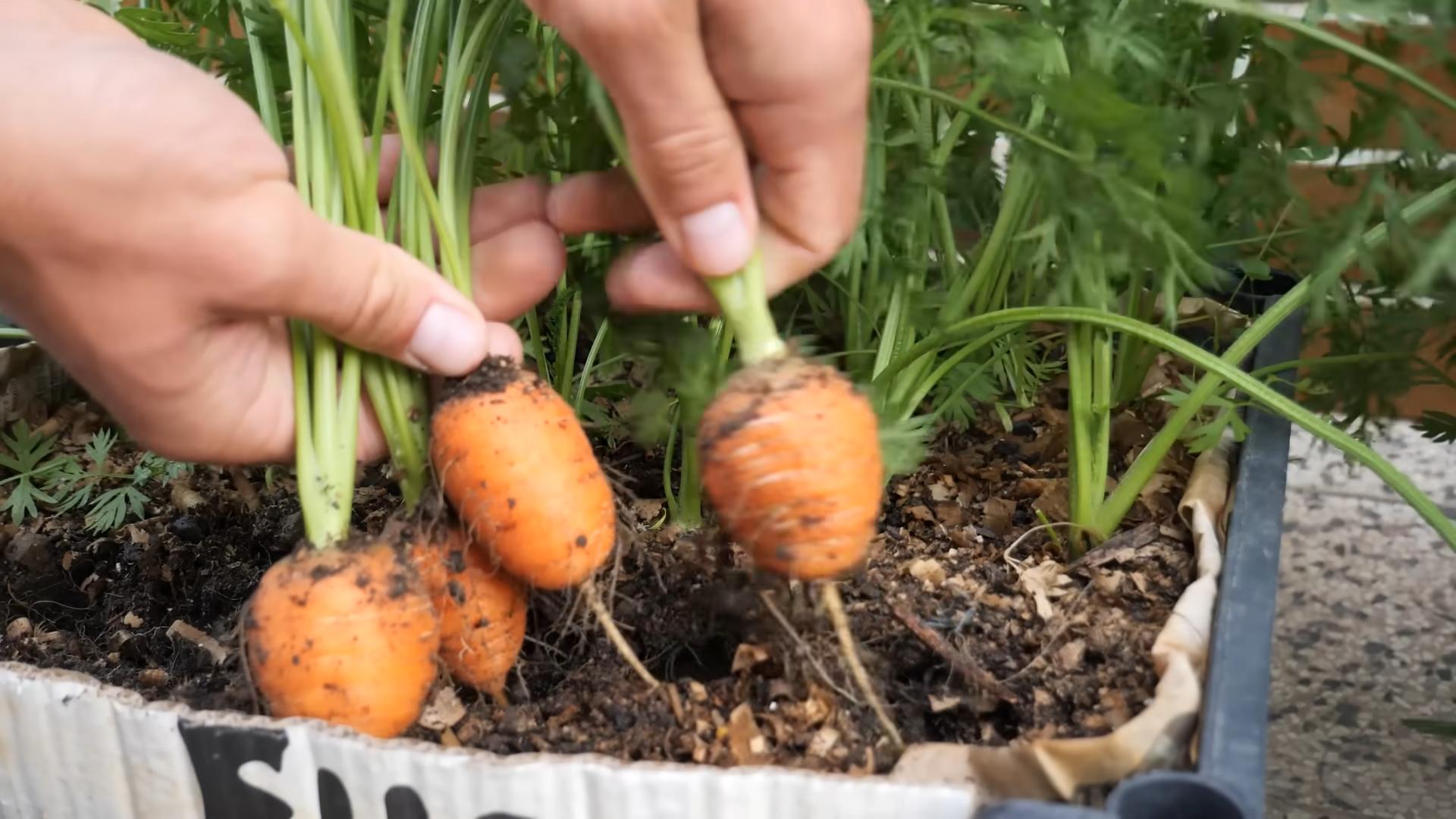
Starting Carrots from Seed: A Gardener’s Guide to Sweet Success
Okay, so you want to grow carrots from seed? Awesome! It’s totally doable, and honestly, there’s nothing quite like pulling a vibrant, homegrown carrot straight from the earth. I’ve been doing this for years, and I’m going to walk you through everything you need to know to get your own carrot patch thriving. Let’s get started!
Choosing the Right Carrot Variety
First things first, let’s talk carrots! There are so many different varieties, and choosing the right one can make a big difference in your success. Consider these factors:
* Growing Season Length: How long is your growing season? Some carrots mature faster than others. Shorter varieties like ‘Thumbelina’ or ‘Little Finger’ are great for shorter seasons. Longer varieties like ‘Nantes’ or ‘Danvers’ need more time.
* Soil Type: Carrots need loose, well-drained soil. If your soil is heavy clay, shorter, rounder varieties will do better. Longer, thinner varieties need looser soil to develop properly.
* Personal Preference: Do you prefer sweet carrots? Crunchy carrots? Orange, purple, or yellow carrots? Experiment and find your favorites! I personally love ‘Rainbow Blend’ for the variety of colors and flavors.
Preparing the Soil: The Key to Carrot Success
Carrots are notoriously picky about their soil. They need loose, well-drained soil to grow straight and long. Rocky or compacted soil will result in forked, stunted carrots. Here’s how I prepare my carrot beds:
* Timing is Everything: Prepare your soil a few weeks before you plan to sow your seeds. This gives the soil time to settle.
* Clear the Area: Remove any rocks, sticks, or debris from the area. Even small stones can cause carrots to split or fork.
* Loosen the Soil: This is the most important step! Use a garden fork or tiller to loosen the soil to a depth of at least 12 inches. The deeper, the better!
* Amend the Soil: Add plenty of organic matter, such as compost, well-rotted manure, or peat moss. This will improve drainage, aeration, and fertility. I usually add a thick layer of compost and work it into the soil.
* Create Raised Beds (Optional): If your soil is particularly heavy or poorly drained, consider creating raised beds. This will improve drainage and warm the soil faster in the spring.
* Rake Smooth: Once you’ve amended the soil, rake it smooth to create a fine, even seedbed. This will make it easier to sow the seeds evenly.
Sowing the Seeds: Patience is a Virtue
Carrot seeds are tiny, which can make them a bit tricky to sow evenly. But don’t worry, I’ve got some tips and tricks to help you out:
1. Choose the Right Time: Carrots are a cool-season crop, so sow your seeds in early spring or late summer. In my area, I aim for about 2-3 weeks before the last expected frost in spring, and then again in late summer for a fall harvest. Check your local frost dates!
2. Create Shallow Furrows: Use a hoe or your finger to create shallow furrows in the soil, about 1/4 to 1/2 inch deep. Space the furrows about 2-3 inches apart.
3. Sow the Seeds Sparsely: This is the tricky part! Carrot seeds are tiny, so it’s easy to sow them too thickly. Try to space the seeds about 1/2 inch apart. I find it helpful to mix the seeds with sand or coffee grounds to make them easier to see and handle.
4. Cover the Seeds Lightly: Gently cover the seeds with a thin layer of soil. You can also use vermiculite or fine compost.
5. Water Gently: Water the area gently with a watering can or hose with a gentle spray nozzle. Be careful not to wash away the seeds.
6. Keep the Soil Moist: Carrot seeds need consistent moisture to germinate. Keep the soil moist but not soggy until the seedlings emerge. I often cover the bed with burlap or shade cloth to help retain moisture.
Thinning the Seedlings: Crucial for Carrot Development
This is probably the most important step that many new gardeners skip! Thinning is absolutely essential for growing good-sized carrots. If you don’t thin them, they’ll be overcrowded and won’t have enough room to develop.
1. When to Thin: Thin the seedlings when they are about 1-2 inches tall.
2. How to Thin: Gently pull out the extra seedlings, leaving about 1-2 inches between each plant. You can use small scissors to snip the seedlings at the soil line if you prefer.
3. Second Thinning (Optional): When the carrots are about 4-5 inches tall, you can thin them again, leaving about 3-4 inches between each plant. This will give them even more room to grow.
4. Don’t Waste the Thinnings!: You can eat the thinnings! They’re like baby carrots and are delicious in salads or as a snack.
Watering and Weeding: Keeping Your Carrots Happy
* Watering: Carrots need consistent moisture, especially during germination and early growth. Water deeply and regularly, especially during dry spells. Avoid overhead watering, as this can promote fungal diseases. Soaker hoses or drip irrigation are ideal.
* Weeding: Weeds can compete with carrots for water, nutrients, and sunlight. Keep the area around your carrots weed-free. Hand-weeding is best, as hoeing can damage the shallow roots of the carrots. Mulching can also help suppress weeds.
Pest and Disease Control: Protecting Your Crop
Carrots are relatively pest-resistant, but there are a few things to watch out for:
* Carrot Rust Fly: This is the most common pest of carrots. The larvae tunnel into the roots, causing damage and making them unmarketable. Cover your carrot bed with row covers to prevent the flies from laying their eggs. You can also use nematodes to control the larvae in the soil.
* Aphids: Aphids can suck the sap from carrot leaves, weakening the plants. Spray them with a strong stream of water or use insecticidal soap.
* Leaf Blight: This fungal disease can cause brown spots on the leaves. Improve air circulation by thinning the plants and avoid overhead watering. You can also use a fungicide if necessary.
Harvesting Your Carrots: The Sweet Reward
The moment you’ve been waiting for! Harvesting your own carrots is so rewarding.
1. When to Harvest: Carrots are typically ready to harvest 60-80 days after sowing, depending on the variety. Check the seed packet for specific maturity dates.
2. How to Harvest: Gently loosen the soil around the carrots with a garden fork. Then, grasp the tops of the carrots and pull them straight up. If the soil is dry, water the area before harvesting to make it easier to pull the carrots.
3. Storing Your Carrots: Store your carrots in a cool, dark, and humid place. You can store them in the refrigerator in a plastic bag or container. You can also store them in a root cellar or buried in sand.
Troubleshooting: Common Carrot Problems and Solutions
* Forked Carrots: This is usually caused by rocky or compacted soil. Make sure to prepare your soil properly before sowing the seeds.
* Stunted Carrots: This can be caused by poor soil, lack of water, or overcrowding. Make sure to amend your soil with plenty of organic matter, water regularly, and thin the seedlings properly.
* Bitter Carrots: This can be caused by hot weather or lack of water. Carrots prefer cool weather and consistent moisture.
* Green Shoulders: This is caused by the tops of the carrots being exposed to sunlight. Hill up the soil around the carrots to cover the shoulders.
Extra Tips for Carrot Growing Success
* Succession Planting: Sow carrots every few weeks to ensure a continuous harvest throughout the season.
* Companion Planting: Plant carrots with onions, garlic, or rosemary to deter pests.
* Rotate Your Crops: Avoid planting carrots in the same spot year after year to prevent soilborne diseases.
* Have Fun!: Gardening should be enjoyable! Don’t be afraid to experiment and try new things.
Growing carrots from seed takes a little patience and effort, but it’s totally worth it. There’s nothing quite like the taste of a fresh, homegrown carrot. So get out there, get your hands dirty, and start growing! You’ll be amazed at what you can accomplish. Happy gardening!
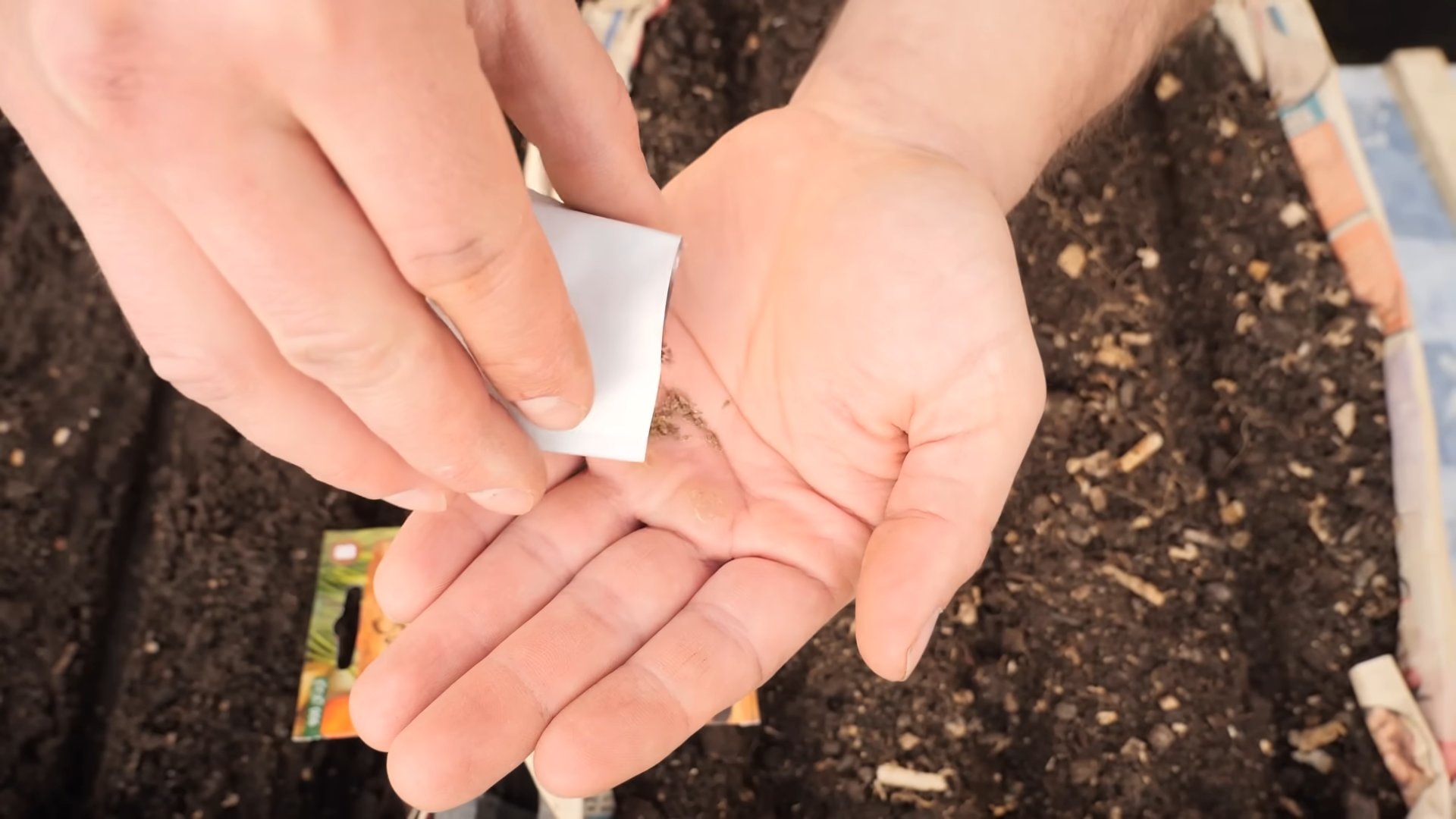
Conclusion
So, there you have it! Starting carrots from seed might seem a little daunting at first, but with these simple steps and a little patience, you’ll be harvesting your own sweet, crisp carrots in no time. This DIY approach isn’t just about saving money; it’s about connecting with your food, understanding the growing process, and enjoying the unparalleled flavor of homegrown produce.
Why is this a must-try? Because store-bought carrots simply can’t compare to the vibrant taste and satisfying crunch of carrots you’ve nurtured from tiny seeds. Plus, you have complete control over the growing environment, ensuring your carrots are free from unwanted chemicals and pesticides. Think of the satisfaction of pulling those first bright orange roots from the soil – it’s an experience that’s both rewarding and delicious.
But don’t stop there! Experiment with different carrot varieties. Try Nantes for their classic cylindrical shape and sweet flavor, or Danvers for their robust growth and excellent storage capabilities. Rainbow carrots, with their vibrant hues of purple, yellow, and red, add a splash of color to your garden and your plate. You can also try succession planting, sowing seeds every few weeks, to ensure a continuous harvest throughout the growing season. Consider companion planting too. Carrots thrive alongside onions, garlic, and rosemary, which can help deter pests and improve soil health.
And if you’re feeling adventurous, why not try growing carrots in containers? This is a great option for those with limited space or poor soil conditions. Just make sure to choose a deep container (at least 12 inches) and use a well-draining potting mix.
Ultimately, the key to success when you start carrots from seed is to be patient, pay attention to your plants’ needs, and don’t be afraid to experiment. Every garden is different, and what works for one person may not work for another. So, embrace the learning process, have fun, and enjoy the journey from seed to table.
We’re confident that once you experience the joy of growing your own carrots, you’ll never go back to store-bought again. So, grab your seeds, prepare your soil, and get ready to embark on a rewarding gardening adventure.
We’d love to hear about your experiences! Share your tips, tricks, and photos in the comments below. Let’s build a community of carrot-growing enthusiasts and inspire others to discover the joys of homegrown produce. Happy gardening!
Frequently Asked Questions (FAQ)
What is the best time to start carrots from seed?
The ideal time to start carrots from seed depends on your climate. Generally, carrots are a cool-season crop, so you can plant them in early spring (2-3 weeks before the last expected frost) or late summer for a fall harvest. In warmer climates, you can even plant them in the winter. Check your local frost dates and adjust your planting schedule accordingly. For a spring harvest, aim to sow seeds when the soil temperature is consistently above 40°F (4°C). For a fall harvest, sow seeds about 10-12 weeks before the first expected frost.
How deep should I plant carrot seeds?
Carrot seeds are very small, so they should be planted shallowly. Sow them about ¼ to ½ inch deep. Cover them lightly with soil or fine compost. Be careful not to bury them too deep, as this can prevent them from germinating.
Why aren’t my carrot seeds germinating?
There are several reasons why your carrot seeds might not be germinating. Common causes include:
* **Poor soil:** Carrots need loose, well-draining soil to germinate properly. Heavy clay soil can prevent the seeds from sprouting.
* **Dry soil:** Carrot seeds need consistent moisture to germinate. Keep the soil consistently moist, but not waterlogged, until the seedlings emerge.
* **Old seeds:** Carrot seeds have a relatively short shelf life. If your seeds are more than a year old, they may have a lower germination rate.
* **Soil crusting:** If the soil surface becomes hard and crusty, it can prevent the seedlings from breaking through. Gently break up the crust with a rake or hoe.
* **Too much shade:** Carrots need at least 6 hours of sunlight per day to thrive. If they’re planted in a shady spot, they may not germinate well.
How often should I water my carrots?
Carrots need consistent moisture, especially during germination and early growth. Water deeply and regularly, aiming for about 1 inch of water per week. Avoid overwatering, as this can lead to root rot. Check the soil moisture regularly and water when the top inch feels dry to the touch.
How do I thin carrot seedlings?
Thinning is essential for giving your carrots enough space to grow. Once the seedlings are about 2 inches tall, thin them to about 1-2 inches apart. When they are about 4 inches tall, thin them again to about 3-4 inches apart. Gently pull out the unwanted seedlings, being careful not to disturb the roots of the remaining plants. You can eat the thinned seedlings as microgreens.
What are common carrot pests and diseases?
Common carrot pests include carrot rust flies, aphids, and nematodes. Diseases include leaf blight and root rot. To prevent pests and diseases, practice good garden hygiene, such as removing plant debris and rotating crops. You can also use organic pest control methods, such as insecticidal soap or neem oil. Ensure good drainage to prevent root rot.
How do I prevent forked carrots?
Forked carrots are often caused by compacted soil or rocks in the soil. To prevent forking, prepare your soil thoroughly before planting, removing any rocks or debris. Amend the soil with compost or other organic matter to improve drainage and texture. Avoid using fertilizers that are high in nitrogen, as this can also contribute to forking.
When are carrots ready to harvest?
Carrots are typically ready to harvest 60-80 days after planting, depending on the variety. You can harvest them when they reach the desired size. Gently loosen the soil around the carrots and pull them out by the tops. If the soil is dry, water it well before harvesting to make it easier to pull the carrots.
How do I store harvested carrots?
To store carrots, remove the tops and gently brush off any excess soil. Store them in a cool, dark, and humid place, such as a refrigerator or root cellar. You can store them in a plastic bag or container with a damp paper towel to help maintain humidity. Carrots can typically be stored for several weeks or even months under the right conditions.
Can I grow carrots in containers?
Yes, you can grow carrots in containers, but you’ll need to choose a deep container (at least 12 inches) to accommodate the roots. Use a well-draining potting mix and water regularly. Choose shorter carrot varieties, such as Nantes or Thumbelina, which are better suited for container growing. Make sure the container receives at least 6 hours of sunlight per day.


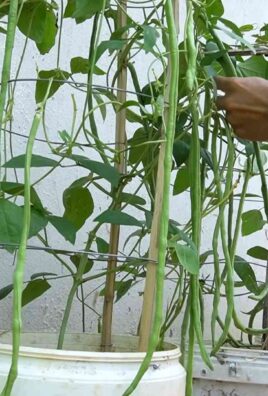
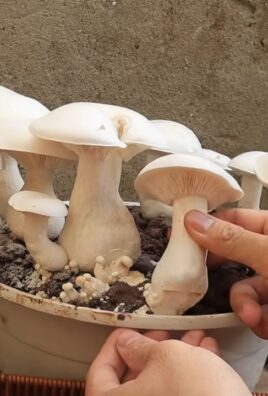
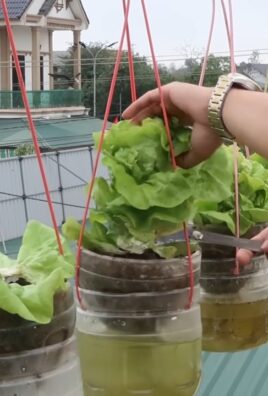
Leave a Comment